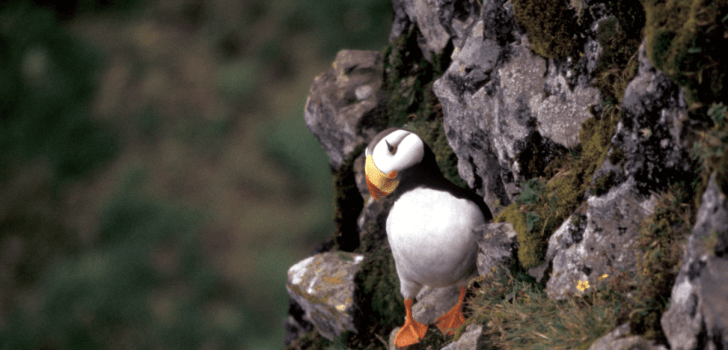Researchers have found that Arctic seabirds are part of perpetuating toxic pollution. In an environmentally polluting circle, the birds are eating contaminated fish in the ocean, defecating the chemicals onto land, which is then absorbed by the soil and makes its way back into the ocean and other waterways through runoff. The contaminated birds are also eaten by other wildlife which in turn is eaten by hunters, creating human health problems.
It is well known that factory and farm chemical runoff makes its way into the oceans, and that tons of chemical filled plastic is dumped into the ocean every day, but until now it has not really been known how these chemicals are coming back to land.
Mark Mallory, Canada research chair and associate biology professor at Nova Scotia’s Acadia University, says that the toxins get absorbed by plankton and other ocean microbes, which are then eaten by fish, which are then eaten by the sea birds.
“At every step up the food chain, the chemicals tend to biomagnify, accumulating and concentrating in their bodies,” says Mallory.
His studies show ocean birds are “like the great cleaners of the ocean”, eating contaminated fish and even plastics. When they get back to land, the birds defecate and vomit and the contaminants are then washed into the ocean, freshwater pools and streams.
Jennifer Provencher, a graduate student in eco-toxicology at Canada’s Carleton University, says, “We may think of the Arctic as this remote, pristine region, but it’s not.”
Provencher has found chemicals and plastic in the livers and stomachs of seabirds that live on the cliffs of Coats Island in the north of Hudson Bay. She says other wildlife like murres ingest plastic from preying on the seabirds, which are hunted by the Inuit. After harvesting the murres, the hunters often throw the gizzards where contaminants gather to their dogs.
“That means chemicals dumped into the oceans are coming back to affect human and animal health,” she says
Wildlife researcher Veronica Padula who studies North American breeding colonies of seabirds on the Aleutian Islands off Alaska says kittiwakes, red-faced cormorants and horned puffins are absorbing large amounts of phthalates which are commonly found in plastics.
“We don’t know if the birds excrete the chemicals through their feces, but it’s getting into their tissues, and if the bird dies on land, it’s definitely getting into the land,” she says.
Padula says although humans are exposed to phthalates from many sources the “interaction between seabirds and humans can be a very direct link between the way these contaminants can move onto land and impact people.”
The return of ocean pollution is not restricted to remote areas. His studies have shown other industrial chemicals like selenium, cadmium and zinc are being found in high levels in the soil of seabird-inhabited islands off the coast of Nova Scotia.
His research also shows three species of commonly hunted game birds are ingesting metals and plastics while looking for food in coastal areas, then bring the contaminants back to inland freshwater wetlands, where hunters shoot the birds for food.
“It’s actually quite scary, especially when you start looking at what these chemicals do,” Padula says. “You kind of want to find a bunker and hide.”
Stay Connected